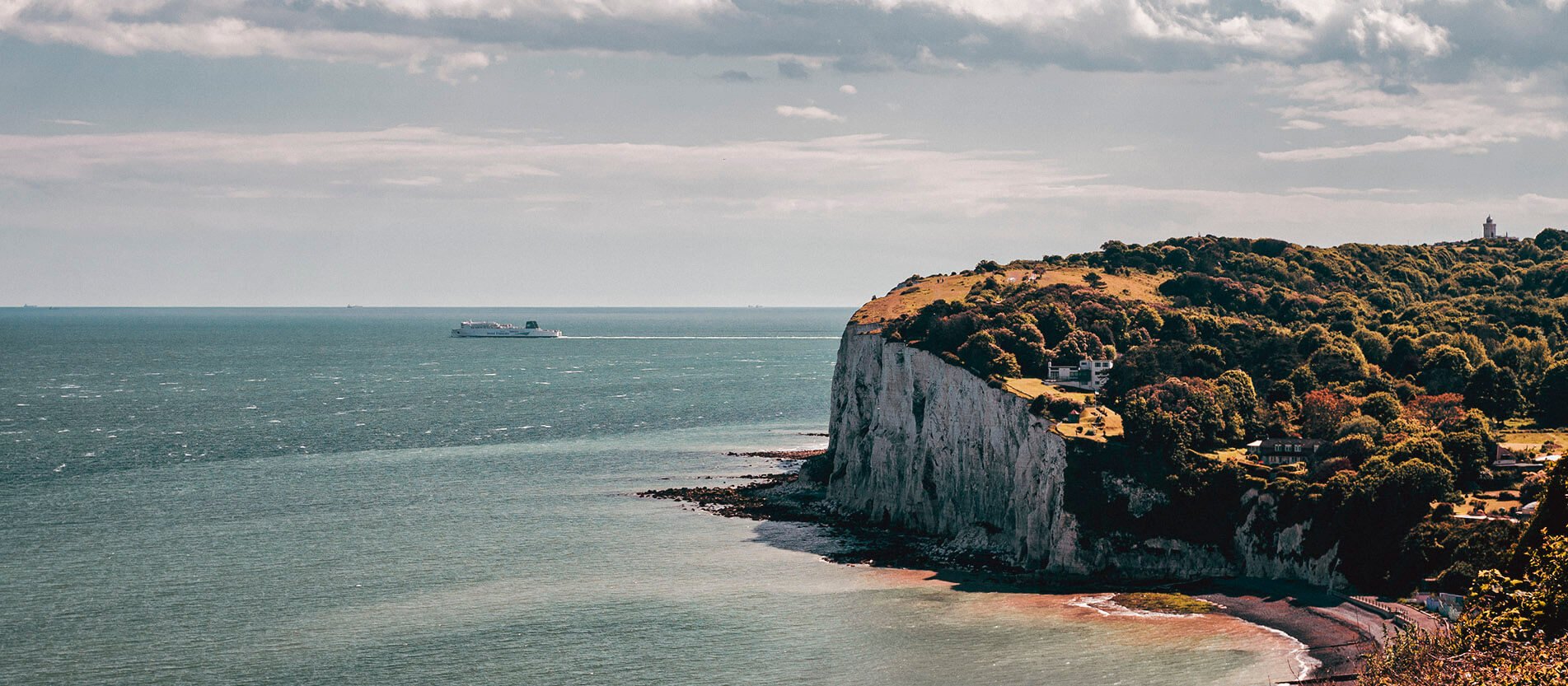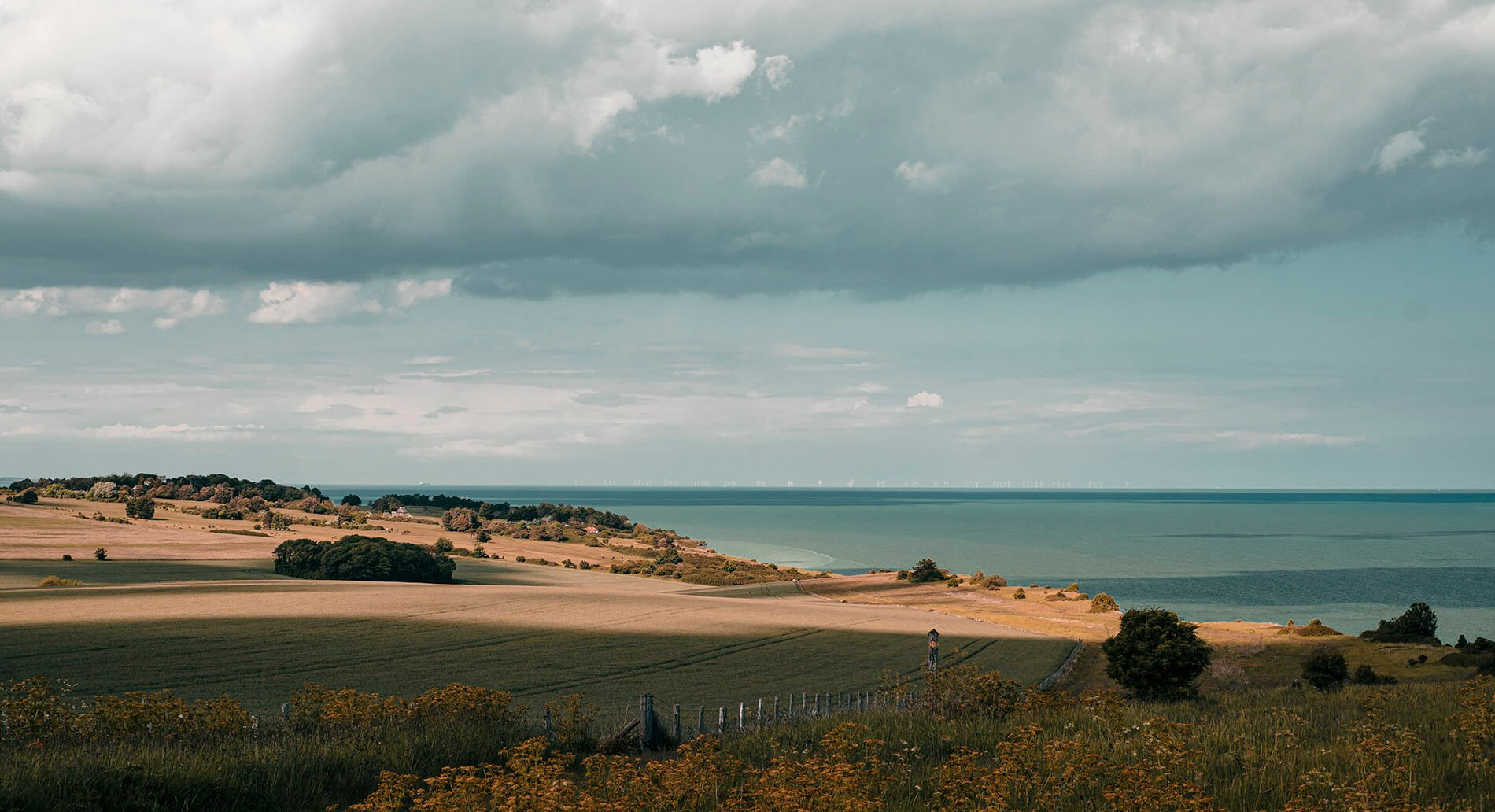
Walking Along The White Cliffs of Dover
Deal to Dover, South-East England Coastal Walk
Starting in the town of Deal
Once a thriving fishing and mining town, Deal today is a rather laid back seaside resort, tucked away from the major road network. You don’t pass through Deal, you go there for a reason. It sits on the south-east coast of Kent just 25 miles across the English channel from France. You can see the French coast on a clear day. My first impression was there’s not too much going on in Deal. As it turns out, there’s a great deal, if you’ll excuse the pun. If you’re a foodie like me, there are some wonderful bistros serving freshly caught seafood and quaint old pubs serving local ale. For those who appreciate a creative vibe, Deal is a hidden gem. The two notable historic landmarks are the pier and castle.
The pier is Deal’s third. The first, built of wood, was destroyed by a gale in 1857. The second was built of iron and destroyed during the second world war. The third and present pier was built in 1957 and is a Grade II listed building, providing a nice stroll and view of the town, and a great place for a spot of fishing. This was to be my official starting point of my 10-mile coastal walk.
Deal castle was built by Henry VIII around 1539, as a defence against the French and the Holy Roman Empire. He had upset the Pope, and initiated the English Reformation, separating the Church of England from papal authority. This was a security measure, along with similar castles in Walmer and Sandwich.
After a short walk, adjoining Deal, you come to Walmer. Here you’ll find another of Henry VIII’s castles, built at the same time as Deal Castle. It was the home to the Duke of Wellington for many years. William Pitt The Younger, the youngest Prime Minister of Great Britain, was once Lord Warden here.
The coastal trail in this section of the walk, along Wellington Parade, is paved through Walmer and Kingstown. It’s surrounded with an abundance of colourful wildflowers and beach huts on the pebble beach, competing for attention. Plenty of photography opportunities here, you might consider bringing a macro lens, there are so many plant varieties to shoot. I’m pretty sure many of the varieties are not native to the area.
I fancied a nice scenic local coastal walk, so I jumped on a bus in Folkestone, and took a ride to Deal, changing buses at Dover. The plan was to walk about 10 miles from Deal to Dover, over the famous White Cliffs.

The views looking back along the coast towards Deal, from the top of the cliffs, are spectacular
St Margaret’s Bay to Dover
After looking around St Margaret’s beach and taking a few photos of the cliffs with ferries on the horizon, I walked up Bay Hill for a very short distance, and took a left onto Beach Road. The route passes The Pines Garden Tea Room & Museum, and from there you have the choice to walk along The Front, which is basically a dirt road; or follow the grassy trail that hugs the clifftops. I chose the latter, which eventually joins the dirt road briefly, before the trail takes a turn towards the cliffs again as it passes the National Trust’s South Foreland Lighthouse, and hugs the clifftops once more. At this point, the cliffs are rather high, and after a while you see the Port of Dover in the distance, followed by a view of Dover Castle.
I was under the impression this section of the coastal trail would be fairly quiet, but I was wrong. As I got closer to Dover, there were many people out walking along the clifftops. It was Jubilee week and half-term, so I suppose this would explain it.
With Dover’s large Port in view, the trail splits, and I kept to the left, continuing to hug the cliffs as much as possible. The trail dropped steeply, and then a steep climb was required that was very steep and tricky. Good grippy footwear is essential.
Once I reached the Zetland Arms, a Shepherd Neame pub, I walked across the beach until I reached the start of the white cliffs. This vast impressive chalk landmark was formed up to 85 million years ago. There are steep steps that take you up on top of the cliffs, and from there, it’s a nice trial across grass to St Margaret’s. When you reach the Bluebird Tea Room, you can continue your walk on Granville Road into St Margaret’s, but I took a left turn and continued on the grass trail that hugs the cliff tops, which is far more interesting. You’ll come to zig-zag steps that take you right down onto St Margaret’s beach. This small hidden bay was popular with smugglers for centuries, and in 1801 a wall was built to help prevent potential invasion by Napoleon.

There is an option to walk to Dover Castle, but I made my way down towards Marine Parade, and from there popped into Marks & Spencer’s Food Hall for a well deserved sandwich and IPA, which I enjoyed on the bus ride back to Folkestone.
Watch my YouTube video of this coastal walking adventure:
WALKING NOTES
There are a few steep climbs on this walk, so a moderate level of fitness is required. It can get slippery in places, so good footwear with plenty of grip is advisable. Walking along the exposed clifftops for much of the way, you can get hit by rain and fairly strong wind (I did!), so a good water & wind-proof jacket is also recommended.
PHOTOGRAPHY NOTES
This is a really fantastic walk for a spot of coastal landscape photography. There are lots of interesting plants and wildflowers on this walk, so a macro lens is worth considering. The views in many places are impressive looking along the coastline, so a telephoto lens is also worth consideration.










